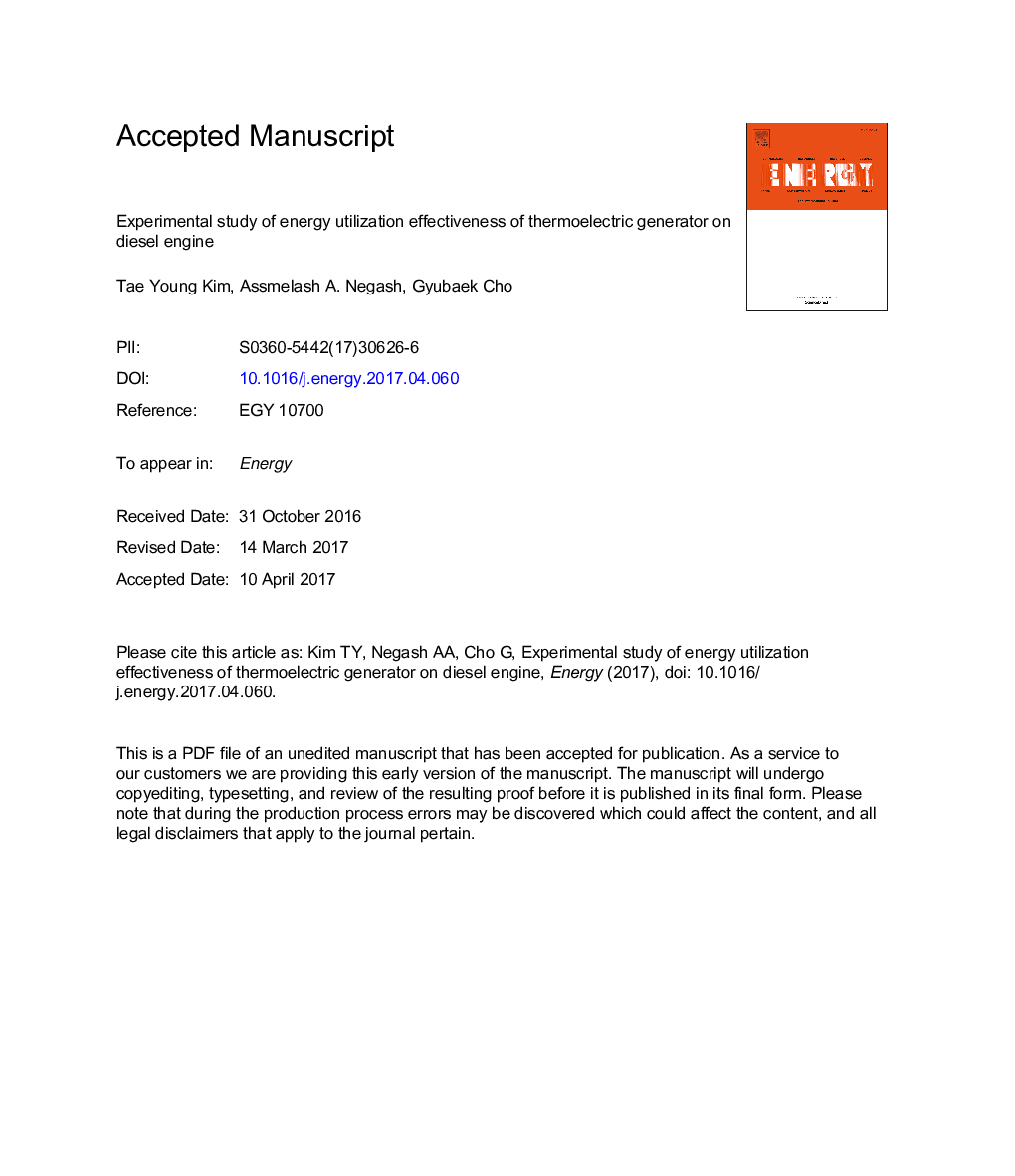| Article ID | Journal | Published Year | Pages | File Type |
|---|---|---|---|---|
| 5476048 | Energy | 2017 | 33 Pages |
Abstract
This study was devoted to investigating the energy utilization of a thermoelectric generator (TEG). Key factors governing the power generation characteristics of the TEG-the power output, system resistance, and conversion efficiency-are systematically analyzed under various engine operating conditions. The effects of heat rejection conditions on the energy utilization by the TEG are also examined. Experimental results show that a slight coolant temperature reduction of 10Â K increases the TEG power output by up to 33.7%, increasing the short-circuit current. The coolant temperature reduction also causes more than 34.8% improvement in the conversion efficiency. Contour maps for the power output and conversion efficiency are proposed as functions of the engine load and speed. A maximum power output and conversion efficiency obtained are â¼125.7Â W and â¼3.0%, respectively. In contrast to the coolant temperature effect, a change in the coolant flow rate has a relatively insignificant effect on energy utilization: the power output variation is only 6.8%-8.5%. The TEG design effectiveness is evaluated by analyzing the flow of exhaust gas energy. The analysis shows that a relatively large portion of exhaust gas energy (37.4%-47.1%) is lost to the environment instead of being used for power generation by the TEG.
Keywords
Related Topics
Physical Sciences and Engineering
Energy
Energy (General)
Authors
Tae Young Kim, Assmelash A. Negash, Gyubaek Cho,
